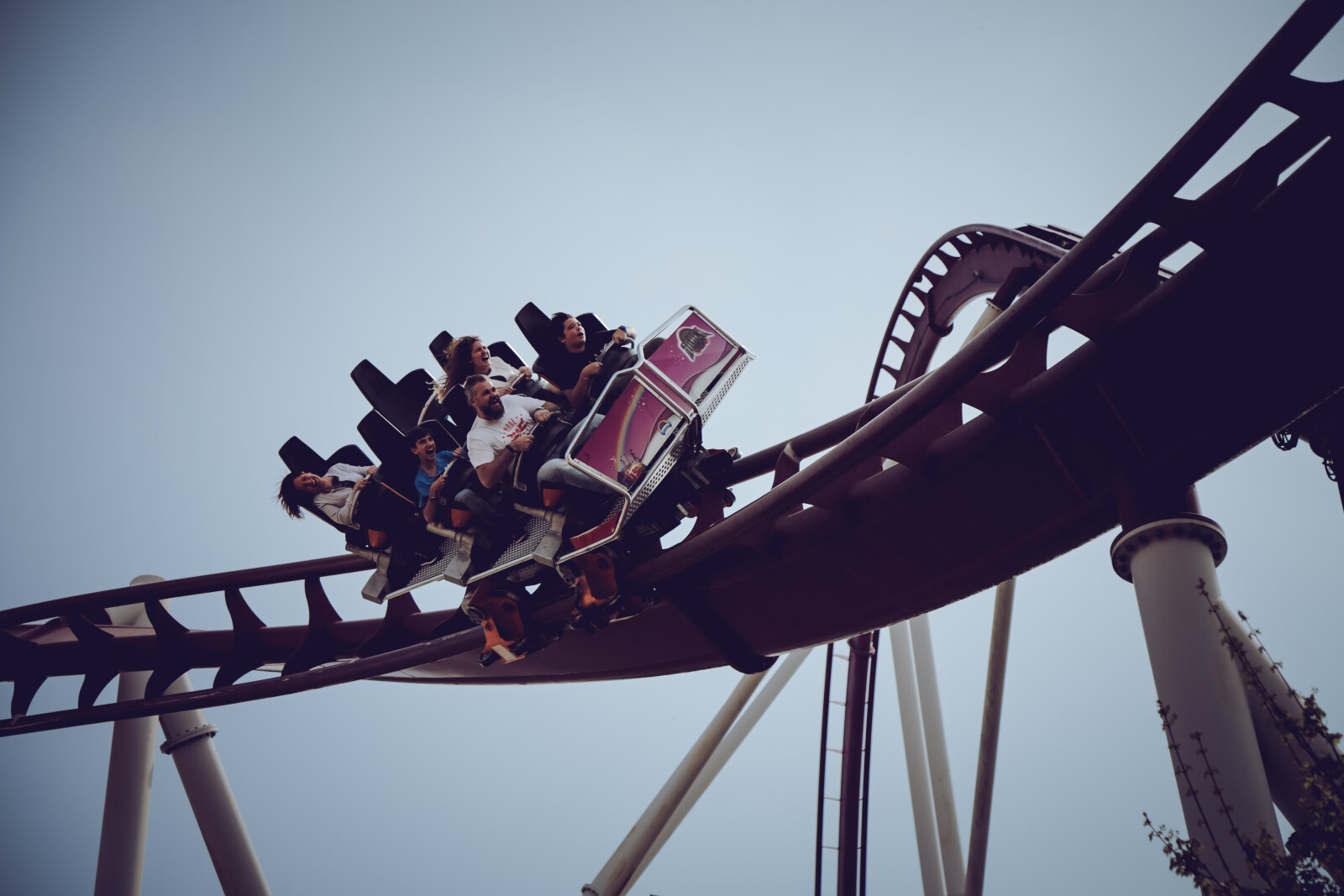Amusement Park Injuries and Accident Claims: How to Pursue a Settlement
The truth of the theory regarding amusement park injuries unveils an alarming frequency of incidents primarily affecting individuals under 24 years of age.

This article explores the multifaceted causes of these accidents, delving into operator errors, mechanical failures, and poorly designed rides.
It further elucidates the legal obligations of amusement parks, the importance of compelling evidence in making successful claims, and the crucial role of legal assistance in navigating these complex processes.
Key Takeaways
- Negligent amusement park and carnival operators are often responsible for accidents
- Mechanical failures are a common cause of amusement park accidents
- Poorly designed and defective rides can lead to disastrous results
- Amusement park visitors are vulnerable to assaults, robberies, and slip and fall accidents
Understanding the Common Causes of Amusement Park Accidents
Understanding the common causes of amusement park accidents is crucial in the pursuit of successful injury claims and settlements. These accidents can range from operator error and mechanical failure to poorly designed rides and other incidents. Amusement park accident statistics indicate that thousands of these incidents occur annually, predominantly affecting individuals under the age of 24. Operator error, often due to distraction or negligence, contributes significantly to these figures. Mechanical failures, despite stringent maintenance practices, also lead to a considerable number of accidents. Inadequately tested rides, with inherent design flaws, pose an alarming safety risk. Seeking compensation for injuries sustained from such accidents is a viable course of action, necessitating a comprehensive understanding of these precipitating factors.
The Role of Ride Operator Errors in Amusement Park Accidents
Ride operator errors contribute significantly to incidents at recreational venues, with factors such as distraction, substance abuse, or inadequate training often playing a role in these unfortunate events. The impact of ride operator training on amusement park accidents cannot be underestimated. Proper training ensures that operators can effectively manage rides and respond swiftly to emergencies, thereby reducing accidents.
Inspections also play a crucial role in preventing amusement park accidents. Regular and meticulous ride inspections help identify potential safety issues before they become hazardous.
- Over 43,000 amusement park-related injuries are treated annually.
- Majority of the victims are young, below 24 years of age.
- Seeking compensation for these injuries is a challenging task.
The proper training of ride operators and regular inspections are imperative in ensuring the safety of amusement park patrons.
Mechanical Failures: A Hidden Danger in Amusement Parks
Mechanical failures, despite regular maintenance and safety checks, serve as a silent but significant contributor to incidents at recreational venues, with continuous usage and the inherent wear and tear leading to unexpected breakdowns. Preventing mechanical failures is paramount to ensuring ride maintenance and safety, yet it remains a challenging task due to the demanding operational conditions.
| Mechanical Failures | Mitigation Strategies |
|---|---|
| Wear and Tear | Regular inspections and replacements |
| Continuous Usage | Scheduled downtime for maintenance |
| Unseen Defects | Advanced diagnostic tools |
| Environmental Factors | Protective designs and materials |
Every effort must be made to mitigate the risks associated with mechanical failures. Adequate preventive measures, coupled with state-of-the-art diagnostic tools, can significantly reduce the probability of such incidents, thereby enhancing the overall safety of amusement parks.
The Problem of Poorly Designed and Defective Rides
Insufficient testing and oversight of new attractions often leads to the introduction of poorly designed and defective rides, posing significant safety risks to patrons. This lackadaisical approach towards testing and safety standards for amusement park rides can result in catastrophic accidents with severe and sometimes fatal injuries.
- Devastating accidents due to defective rides, causing permanent physical scars and psychological trauma.
- The failure of amusement parks to prioritize patron safety, leading to a surge in avoidable accidents.
- The struggle of victims to hold operators accountable, entangled in a legal labyrinth while grappling with their injuries.
Amusement park owners and manufacturers hold the liability for defective rides, and it is incumbent upon them to ensure stringent testing and adherence to safety standards to prevent avoidable tragedies.
Exploring Other Types of Amusement Park Accidents
Beyond the realm of defective rides, a plethora of other hazards such as assaults, robberies, and slip and fall incidents also pose considerable threats to visitors in these recreational venues. The importance of proper security measures at amusement parks cannot be overstated, as they serve to deter potential criminal activity. Weather conditions too have a significant impact on amusement park accidents, particularly in cases of slip and fall incidents, where rain or snow can make surfaces dangerously slippery.
| Type of Accident | Preventive Measure | Contributing Factor |
|---|---|---|
| Assaults | Improved security | Lack of surveillance |
| Robberies | Increased patrols | Insufficient lighting |
| Slip and Fall Incidents | Regular maintenance | Weather conditions |
Effective implementation of preventive measures can significantly reduce these risks, thereby ensuring a safe and enjoyable experience for all visitors.
Duty of Care: What Amusement Parks Owe to Visitors
Establishments open to the public, such as recreational venues, are legally bound to ensure the safety of their patrons, a responsibility often referred to as the 'duty of care'. This is particularly crucial in amusement parks where failure to uphold safety regulations can result in severe accidents.
In the face of negligence, patrons must bear the unfortunate consequences of amusement park accidents. The neglect of amusement park safety regulations can result in irreversible emotional and physical trauma. Due diligence in adhering to safety regulations is essential to prevent such accidents and uphold the trust of patrons.
Therefore, it is of paramount importance that amusement parks rigorously adhere to established safety regulations to create a secure environment, effectively reducing the risk of accidents caused by negligence.
Building a Strong Evidence Base for Your Accident Claim
Construction of a robust evidence base is fundamental when seeking restitution for incidents occurring in recreational venues. In the context of amusement park accidents, the importance of building a strong evidence base cannot be overemphasized. This involves meticulous documentation of the incident, collation of medical records, and compilation of eyewitness testimonies.
Furthermore, scientific examination of the accident scene and the malfunctioning ride, if applicable, can provide invaluable insights. Corroborating these multifaceted pieces of evidence can establish liability, thereby facilitating the process of pursuing a fair settlement.
It is essential to remember that successful restitution claims hinge on the strength of the evidence base, making it a cornerstone of legal procedures in the aftermath of amusement park accidents.
Why Legal Assistance Is Essential in Amusement Park Injury Claims
Navigating the intricate complexities of legal proceedings following incidents at recreational venues requires specialized knowledge and expertise, underscoring the crucial role of professional legal assistance. This assistance is pivotal in overcoming challenges in settlement negotiations and underlines the importance of legal representation.
The labyrinth of legal jargon and procedures can be overwhelming for the uninformed, potentially leading to subpar settlements.
Legal representation offers a strategic advantage by navigating these complexities, ensuring a fair settlement is reached.
Insurance companies often employ tactics to minimize compensation, only a seasoned legal professional can effectively counter these strategies.
In essence, securing legal assistance is not merely an option but a necessity in ensuring just compensation for amusement park-related injuries.
Frequently Asked Questions
What Are the Most Common Injuries Sustained During Amusement Park Accidents?
Injury statistics reveal that the most common injuries sustained during amusement park accidents include fractures, concussions, lacerations, and even death in extreme cases. These injuries can result from ride safety failures, operator errors, or mechanical malfunctions.
Young individuals under the age of 24 are predominantly affected. Despite safety regulations, thousands of incidents occur annually, highlighting the need for stringent safety measures and responsible operation practices.
How Can One Prevent Amusement Park Accidents and Injuries?
Prevention of amusement park accidents and injuries necessitates rigorous adherence to safety measures and routine ride inspections.
Comprehensive training for operators, regular mechanical checks, and strict enforcement of safety protocols can mitigate risks.
Ensuring rides are well-maintained and adhering to manufacturer guidelines can prevent mechanical failures.
Additionally, adequate security measures can reduce incidents of assault and robbery.
Lastly, prompt removal of hazards can prevent slip and fall accidents, ensuring a safer environment for visitors.
What Is the Process for Reporting an Accident at an Amusement Park?
The process of reporting an accident at an amusement park entails prompt notification to the park management, ensuring an official incident report is filed.
Crucial to this procedure is the gathering of comprehensive accident documentation, including photographs and descriptions of the incident scene and injuries sustained.
Additionally, obtaining witness statements provides corroborative evidence that may substantiate the claim, especially when seeking compensation for any injuries sustained during the accident.
Can I Pursue a Claim if I Signed a Waiver Prior to Riding an Amusement Park Ride?
The validity of a waiver signed prior to an amusement park ride can be subject to challenge. Depending on jurisdiction, waivers may not absolve parks from liability in cases of negligence, such as inadequate ride maintenance. Therefore, despite signing a waiver, individuals may still have grounds to file a claim if they can demonstrate negligence led to their injury.
However, the legal intricacies surrounding waiver legality necessitate the advice of a knowledgeable attorney.
How Long Does It Generally Take to Settle an Amusement Park Accident Claim?
The duration required to settle an amusement park accident claim varies widely depending on several factors. These factors include the complexity of the case, the severity of injuries, and the degree of insurance involvement. Typically, the settlement process may range from several months to a few years.
There are several factors that can lengthen the settlement process. These include settlement negotiations, the gathering of evidence, the need for medical evaluations, and possible litigation. Settlement negotiations can take time as both parties try to reach a mutually agreeable resolution. The gathering of evidence, which may involve witness statements, accident reports, and expert opinions, can also be a time-consuming process. Additionally, medical evaluations may be necessary to assess the extent of injuries and their impact on the victim's life. In some cases, litigation may be required if a fair settlement cannot be reached through negotiations.
Given these factors, it is important to note that no definitive timeframe can be universally applied to all amusement park accident claim settlements. Each case is unique and requires careful consideration and evaluation.

This post has been generated by AI and was not reviewed by editors. This is Not legal advice. Please consult with an attorney.




